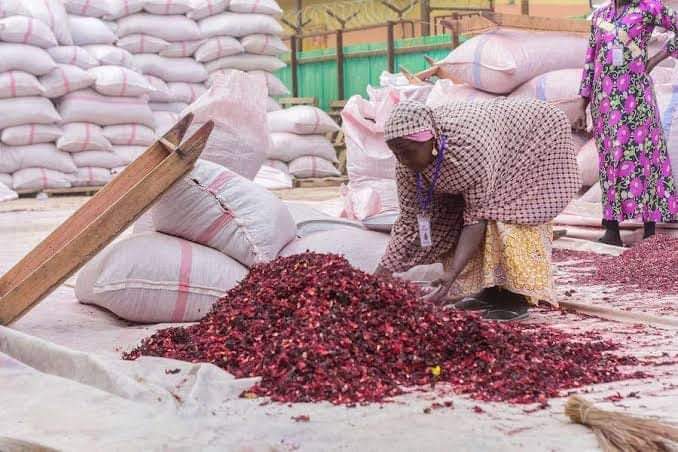Comprehensive Guide to Hibiscus Farming and Its Business Potential in Nigeria
Comprehensive Guide to Hibiscus Farming and Its Business Potential in Nigeria
Hibiscus (Hibiscus sabdariffa), locally known as “zobo” in Nigeria, is a versatile crop grown for its calyces, leaves, and seeds. It has gained popularity for its use in beverages, food coloring, and pharmaceuticals, making hibiscus farming a lucrative agribusiness.
I. Understanding Hibiscus Farming
1. Varieties of Hibiscus
Hibiscus sabdariffa var. sabdariffa: Commonly grown for calyces used in drinks like “zobo.”
Hibiscus sabdariffa var. altissima: Cultivated for its fibers in industries like textiles.
2. Climatic Requirements
Temperature: Thrives in warm climates (21-30°C).
Rainfall: Requires 600-1000 mm of annual rainfall.
Soil: Well-drained sandy loam with a pH of 6-7 is ideal.
3. Land Preparation
Clear and till the land to ensure proper aeration.
Apply organic manure to boost soil fertility.
4. Planting
Spacing: Maintain 60 cm x 60 cm spacing for optimal growth.
Sowing Depth: Plant seeds 2-3 cm deep.
Best planting time is early in the rainy season (April-May).
5. Management Practices
Weeding: Weed regularly to avoid competition.
Irrigation: Supplementary irrigation may be required during dry periods.
Pest and Disease Control: Common pests include aphids and whiteflies. Use organic or chemical pesticides as needed.
6. Harvesting
Harvest the calyces when they are bright red and fleshy, typically 3-4 months after planting.
Seeds can be collected after the calyces have dried.
II. Business Opportunities in Hibiscus Farming
1. Product Uses
Calyces: Used in making zobo, teas, syrups, and jams.
Leaves: Edible and used as vegetables.
Seeds: Processed into oil or animal feed.
2. Value Addition
Processing calyces into dried products for export.
Packaging hibiscus tea or zobo drink for retail.
3. Market Demand
High local demand for zobo.
International demand for dried hibiscus calyces in Europe, the U.S., and Asia.
4. Export Potential
Nigeria is a leading exporter of hibiscus, particularly to Mexico and Germany.
Proper packaging and quality control are essential for international markets.
—
III. Steps to Start a Hibiscus Business
1. Business Plan
Define goals, target market, and financial projections.
Identify value addition opportunities to maximize profits.
2. Land Acquisition
Secure a fertile and accessible piece of land.
3. Inputs Procurement
Source high-quality seeds and fertilizers.
4. Training and Expertise
Learn best practices in cultivation and post-harvest handling.
5. Processing and Packaging
Invest in drying, grinding, or packaging machines for value addition.
6. Marketing and Distribution
Build partnerships with local markets, exporters, and retailers.
Utilize social media to promote your hibiscus products.
IV. Challenges and Solutions
1. Pests and Diseases
Solution: Regular monitoring and integrated pest management.
2. Market Access
Solution: Join cooperatives or associations for better access to buyers.
3. Price Fluctuations
Solution: Focus on value addition to stabilize income.
4. Post-Harvest Losses
Solution: Invest in efficient drying and storage facilities.
V. Profitability of Hibiscus Farming
1. Cost Analysis
Startup Costs: Land preparation, seeds, fertilizers, and labor.
Recurring Costs: Pest control, irrigation, and harvesting.
2. Revenue Streams
Raw Calyces: Sold locally or for export.
Processed Products: Higher profits from packaged teas, syrups, or dried calyces.
3. Return on Investment (ROI)
With proper management, hibiscus farming yields substantial profits. Export-oriented businesses can achieve up to 50% ROI annually.
VI. Conclusion
Hibiscus farming is not just an agricultural activity but a viable agribusiness with immense growth potential. By adopting good farming practices, investing in value addition, and targeting both local and export markets, you can build a profitable enterprise. Proper planning and strategic marketing are keys to success in the hibiscus farming business.




